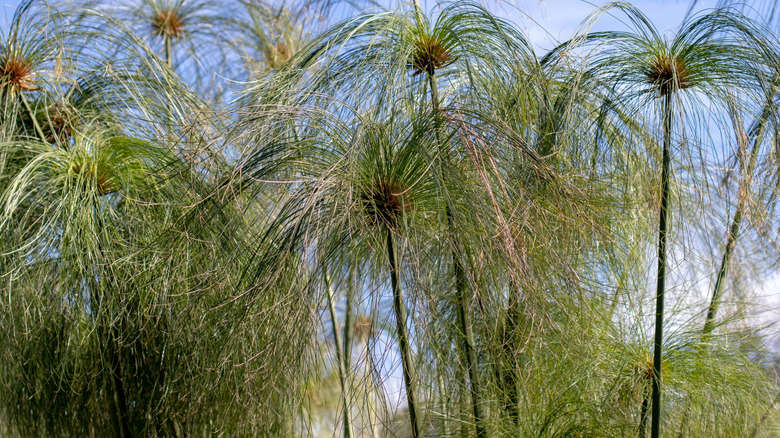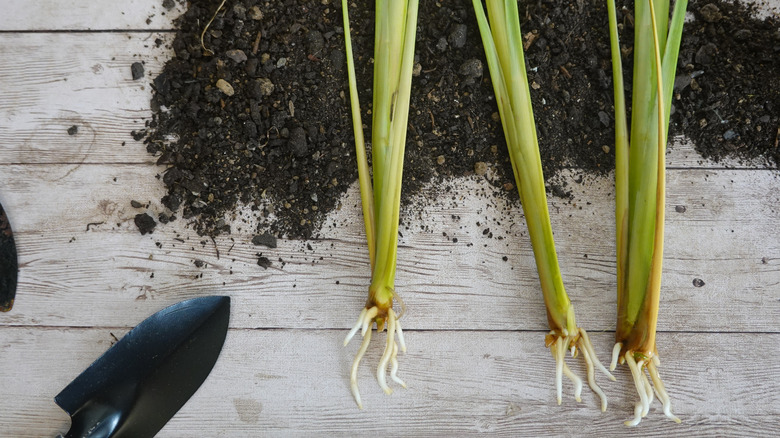The Secret To Effortlessly Propagating Your Papyrus Plant
With its tufted foliage that looks like fireworks, papyrus (Cyperus papyrus) is a plant beloved by many. Suitable to grow outside in USDA Hardiness Zones 9 to 11, papyrus can reach 10 feet tall, adding height and texture to your yard. Those of us who live in colder regions can enjoy papyrus as a unique-looking houseplant to bring the exotic indoors. If you have papyrus in your garden or in your home, you can multiply it for free. Papyrus is an easy plant to propagate from cuttings. All you need is a healthy plant, pots, glass jars, and potting mix.
New papyrus plants can be grown from cutting a stem and placing it upside down in a jar of water. Select a healthy papyrus stem that has foliage at the top. Then, trim the foliage to ensure that your cutting is narrow enough to be submerged. Once that is ready, place the top of your papyrus cutting in the water, with its stem sticking up out of the jar. Then, find a location for your cutting that is bright and warm.
How to look after a papyrus cutting
You will need to ensure that the leaves of your papyrus cutting are always underwater, as this is where new roots will grow. Keep an eye on your cutting and top up the water in the jar if you need to. You should also change the water if it becomes cloudy or begins to smell. The papyrus cutting will be ready to be planted in a pot once the roots are 1 or 2 inches in length. This will be around three weeks after you took the cutting. If your roots are a bit longer, you may want to give them a trim before planting.
Fill a pot with potting soil and water it, ensuring that it is moist but not soggy. Then, make a hole in the soil big enough for the roots and gently place your papyrus cutting in it. Once it is in, pat down the soil around the cutting. Keep the soil moist as the papyrus settles in, and soon you will have new plants to put in your garden or keep indoors! As these aquatic plants are rapid growers, it won't be long until your propagated papyrus plant is thriving. However, if you live in Florida, California, or Hawaii, be aware that papyrus has escaped cultivation in certain areas of these states and can be aggressive by clogging waterways.

